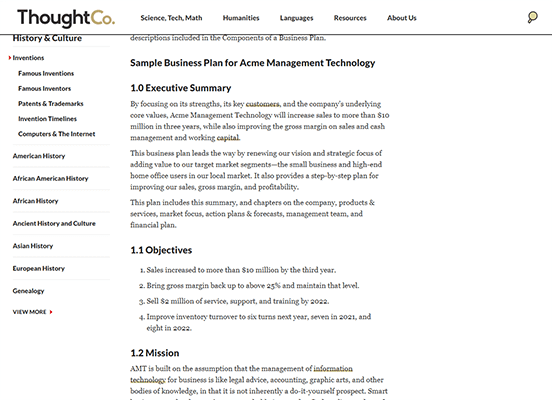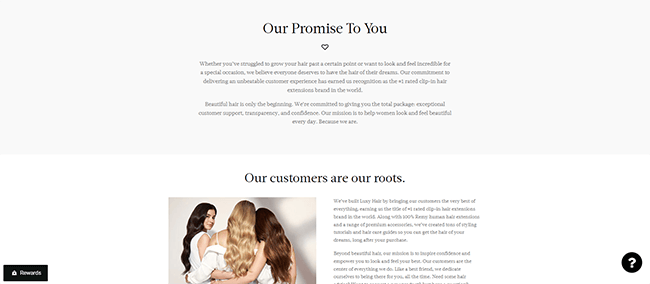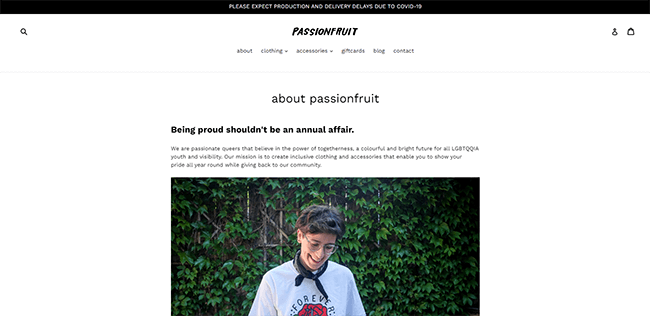What Is A Business Plan? How To Get Started, Tips, & Examples
What is a business plan? And how do you write one? Those are the questions we’ll be answering in this post.
A business plan isn’t just important if you’re looking for investors. It’s important regardless.
You, the entrepreneur, also need a plan so that you’re always clear on what your business goals are and anticipate what challenges you’re likely to face. They’re also helpful if you’re planning on recruiting key talent for your organization.
In this post, we’re going to define what a business plan is and how to write one. You’ll find tips on how to make business plans that shine. And there are even examples here that you can use as reference.
What is a business plan?
Business plans are documents that you keep to yourself for reference or present to others as a means of enticing them to invest. They’re tools used for pitching a business to potential investors.
Each one highlights the mission of the company, its profitability, and plans for growth.
For investors, a business plan will let them know the following:
- Is there a demand for your business?
- Do you have the resources needed to support the business?
- How far can the business grow in its current state?
A good business plan should lay out plans for the future, attract executives, and help secure funding.
But while writing a business plan isn’t difficult, it can only be effective if you know all your facts and figures. By the time you start your business plan, you should already have done market research and know your company’s financial health.
That’s the only way to create a proper roadmap for the business.
How to write a business plan
You want to write a lean startup business plan. Sharing a lot of information while keeping it short is a skill you’ll need to develop.
For reference, traditional business plans are 15 to 30 pages long.
Below are some of the sections that you’d normally see as part of a business plan.
Prepare your executive summary
The executive summary encapsulates everything that one might need to know about the business. It’s the first thing that a potential investor would read to get up to speed on your business.
What do you include in your executive summary?
Your summary should include the name of your company, a short description, your business goals, and a summary of your products or services. It should also state basic details like where you operate, how many employees you have, and who are leading your teams.
In addition, you can mention details like who your target market is. You should also name other parties that have already invested in your business if there are any.
An executive summary shouldn’t be longer than one page. Interested parties should be able to go through it in one sitting. This is your elevator pitch. Make it too long and you risk losing the interest of investors.
When creating a business plan, it’s best to leave the executive summary for last. As the anime implies, it’s supposed to be a summary of your whole presentation. You can’t do that if the presentation isn’t done yet.
Forcing yourself to write your executive summary first might cause you to add details that aren’t in the business plan or omit ones that are there.
Describe your company
Your company description should clearly state what the company is and what it’s setting out to do. This section should make clear who you are as a business owner and how you’re planning to revolutionize your industry.
What you’re trying to do here, basically, is state why investors should care about your business.
As far as details go, you’ll want to let others know your history. Tell them when the business started and where. It’s also important that you specify what type of company you’re running.
For instance: Are you a limited liability company or a sole proprietorship? Also, which state are you registered in currently?
Having a mission statement would also be nice. This is where you come up with an inspirational line to make investors see and believe in your goals as a business owner. It should grab the interest of your readers and make them feel like they’re going to be a part of something huge.
You can also include your company’s major milestones. This will show everyone how far you’ve come in your business journey. It will also inspire confidence in people since they’ll feel like you know exactly what you’re doing.
Present your business goals
You’ll need more than a business idea to convince people to invest. You’ll need to make it clear what your short- and long-term goals are if you want to gain any sort of traction.
Why is that?
It’s because investors need to not only understand what your company does but also where you plan on taking it. They want to know how their investment would help grow the business.
More importantly, they’ll want to learn how they’ll be able to make their money back and then some.
Your business goals will set the tone of your plan.
You’ll have to be as clear as you can when stating how additional funds can grow your business.
For example:
You can say that you’re using the investment to launch a new service that would complement an existing one. Let interested parties know the potential revenue this would generate and how long it would take for them to see results.
Including revenue metrics would help secure funding for your company.
Don’t just create business goals for the sake of impressing people. Make sure that the goals you set are realistic and achievable. They should also be measurable.
You want them to be time-bound as well. That means your business should be able to achieve your goals within a specific period.
Explain your products and services
Here you’re expected to list down all the products and/or services that you have to offer.
You’ll have to break down what each of your products does and how it works. Also, provide pricing details.
If there’s anything special about how you acquire the raw materials needed to produce your products, mention it here. For example, businesses that have exclusive access to a component are at an advantage over their competitors. That would sound appealing to investors.
Make sure to mention if you’ve been issued patents to protect your products.
It’s also at this point where you disclose your supply chain and order fulfillment strategy. Talk about how you manage to produce or procure products and how you’re able to deliver them to customers.
If you’re providing online services, you’d want to mention if customers only pay a one-time fee or if you’re using a subscription model.
This section would be better if you could explain what makes your products or services necessary in today’s environment. Let readers know how each product affects the market.
You want to make your business plan as captivating as possible. So you can use visual aids to make your presentation look even better. This is truer for products that aren’t that easy to describe.
Describe your customers
A business plan outline will always include a section where you discuss your target market.
Not only will this let investors know who buys your products but also what marketing strategy you’d most likely use to acquire customers.
If you have the data, add basic customer details like age, income, education, gender, hobbies, and whatever else you think would help describe your customers.
You should also answer questions like:
- How will you find new customers?
- What medium will you use to connect with them?
- What message are you going to send?
There’s also a need to explain how much you’re spending on marketing. If you know your customer acquisition cost (CAC), be sure to include that in your business plan.
Let investors know where most of your customers come from. If you’re a local business, what town or state are your customers in? And if you’re selling online, how are customers finding you?
Do you have franchisees already? Where are they located? And how well are they received by customers?
Paint readers a picture so they can see who their target market is should they invest in your company.
Introduce your management team
If you have a large company, investors would like to know who is running things in your organization. Having a chart that shows the company’s management structure would accomplish that.
The chart doesn’t have to be that complicated. As long as it makes clear who’s in charge of each department.
Try to explain in detail what their roles and responsibilities are. You want to emphasize just how important they are to your mission.
Show your market research
For you to come up with a solid business strategy, you’ll have to understand the category you’re in. That means knowing who your competitors are and what tactics they’re implementing.
Investors will want to know if you have a competitive advantage over them.
You can’t have a solid business plan without doing market research. So spend time learning about your competitors.
What do you need to know about them?
You need to find out where they’re spending their advertising budget. Do they use Google Ads? Are they focusing on social media? Are they working with influencers to reach their target audience? Do they rely on press releases?
It’s also in your best interest to look at their customer service. How can customers reach these companies? Do they have documentation available? Why do people like them?
There’s also a need to find out what their pricing strategy is and how they’re delivering products to customers. Do they have brick-and-mortar stores? Are they purely online? Do these sellers use third-party e-commerce stores for distribution?
All this information helps investors see how your business model can compete with businesses in your category.
Pitch your marketing and sales plan
This is possibly the most important part of your business plan. When writing a business plan, there’s a need to include your marketing and sales plan.
Ultimately, it is your strategy that would entice investors to pour money into your business.
Potential investors are mostly interested in knowing how you plan on using their money. Will you use it to get more inventory? Are you going to hire more people? Will you use it for advertising? Are you buying new equipment?
Also, provide information on what sort of retention programs you’re using to keep customers coming back. Do you have referral programs? Are you using social media to keep customers loyal?
You’ll have to answer these questions to help investors decide whether working with you will be right for them.
Explain what you’re doing now and what you’re planning to do after you secure funding.
Talk about your finances
You’d have to include financial statements in your business plan. Your income statements should show investors that your business is stable.
It’s typical for a business plan to show a company’s finances for the last 3 to 5 years. This includes balance sheets, income statements, and cash flow statements. You should be transparent if you have existing loans.
Business owners should likewise show their financial projections. If the business were to continue without the help of investors, how much would it make? And if you were able to secure funding, how much revenue would you have?
Tips for your business plan
No matter how good your business plan is, there’s always a chance that it will fail to capture investors.
It’s only right then that you take your time when drafting your business plan. Stick to a proven business plan format. Do your market analysis properly. And don’t forget to include your financial projections and cash flow statement.
Below are some other tips for creating a successful business plan.
Keep it real
One big mistake that some business owners make is that they exaggerate their numbers. What you want to do is keep them grounded. You have to tell the truth.
Investors have teams whose jobs are to assess the data behind the deals they’re making. If you lie, you’ll be found out sooner rather than later. And when you’re caught, expect to lose any trust the investor placed on you.
Update business plans regularly
There’s nothing worse for a potential investor than seeing old data. Of course, they want to see the latest financial projections. They want to hear about your latest marketing strategy and not the one you used years ago.
The problem is that some entrepreneurs create their business plans once and never update them. Not even when a new investor shows interest.
And by the time they realize it, it’s too late.
Strategies change. And so do income statements and other key elements of a business. New competitors come out all the time. Update your business plan so you’re always ready for the next investor.
Look for feedback
It’s so easy to miss small details when you’re working through a business plan all by yourself. This is why it’s highly recommended that you have a colleague, mentor, or advisor go over your plan before presenting it to an investor.
They may be able to find typographical errors or factual inaccuracies that could turn investors off.
Customize your plan
Most business plans target investors. However, you can also use them to secure loans, motivate your teams, or find business partners.
Customize your plan according to who you’re sending them to. This will steer you away from potential misunderstandings and make your business plan seem less generic.
Make it presentable
It goes without saying that you need to make your business plan look presentable. And we’re not just talking about what’s in the presentation. This also refers to the presentation itself.
For example:
If you’re printing the presentation, make sure that you use high-quality paper. Choose one that’s thick and sturdy.
These are small details but they really do make a difference.
Business plan examples
If you’re looking for a good business plan reference, ThoughtCo published one for a fictional company called Acme Management Technology.

It hits all the sections that you need to include in a business plan.
As for building your company description, you can use a company’s About Us page to create your own. Just find a company that’s in the same category as yours and see how they tell their story.
If you’re in the hair extension business, you can use Luxy Hair’s story to create your own.

The brand Passionfruit also has an amazing landing page where it states its company’s mission eloquently.

There are plenty more examples out there — some of which are industry-specific. If you don’t want to start from scratch, you can use a business plan template. Many sites offer them for free.
Conclusion
Creating a business plan isn’t as hard as some business owners think it is. In fact, it should only take you a couple of hours at most if you already have all the information you need with you.
You’ll need to create a business plan if you ever want to secure an investment. Even if you don’t need one just yet, you can make your business plan, save it, and then update it when the time comes.
You want to be ready with your business plan at all times.
Related reading
